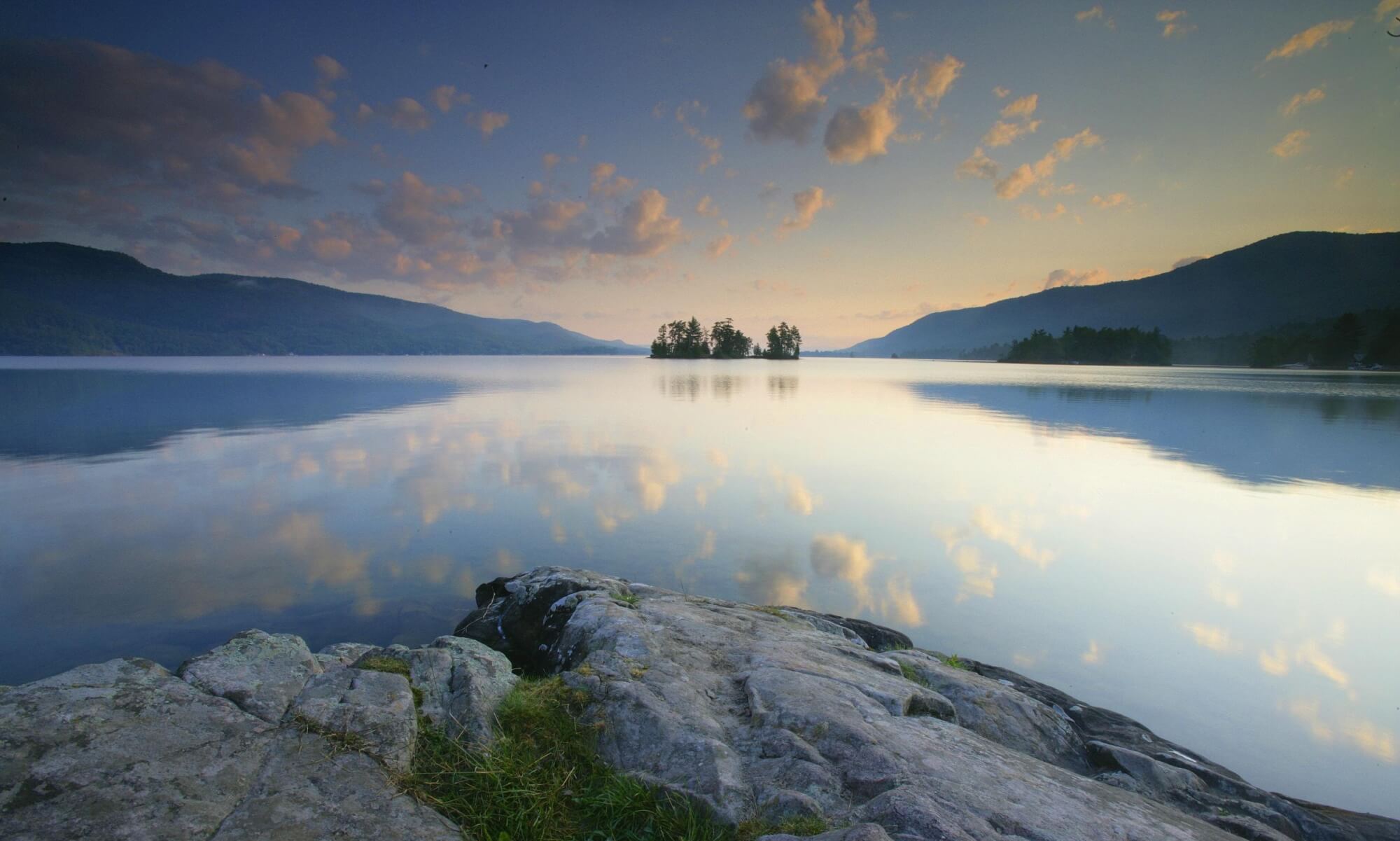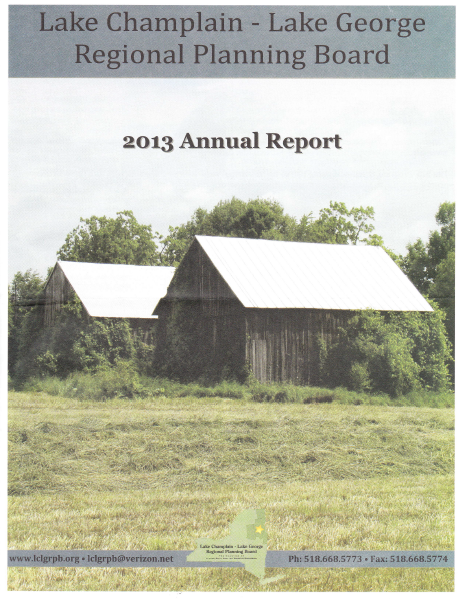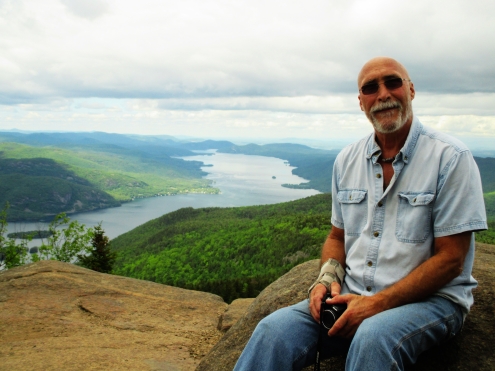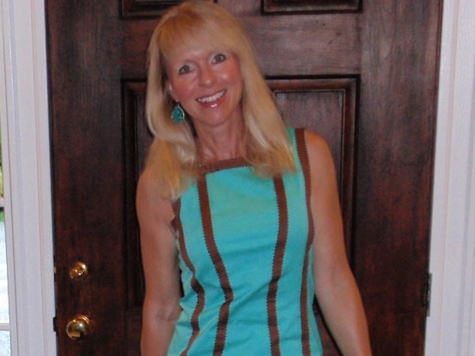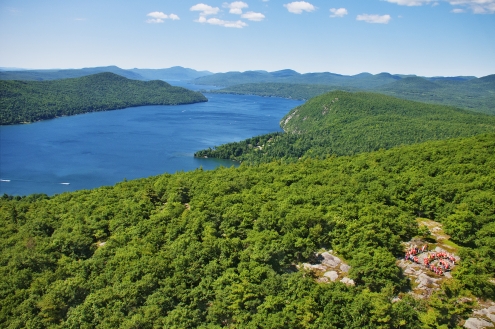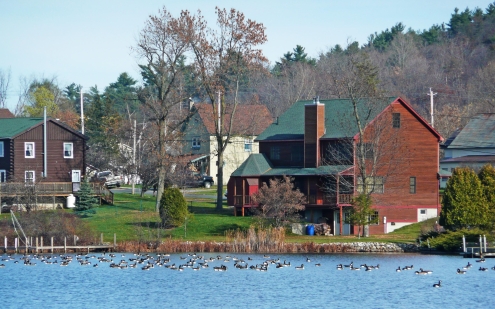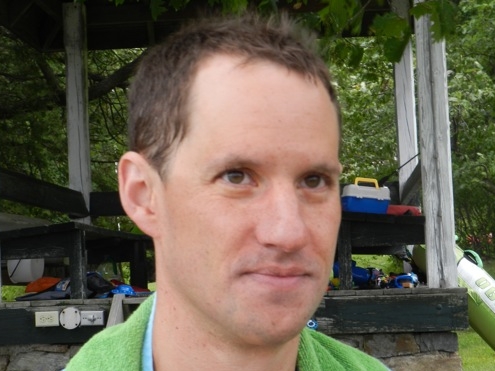
Andrew Hudon reflects on his Lake George swim.
Hey everyone,
As I think most of you know, last weekend I had the privilege to swim the entire 32 mile length of Lake George as part of a cancer fundraiser. While I was swimming, there was a relay team of runners running the length of the lake. The event was called Ripple Effect, and at this point it has raised $9,000 for two colon cancer charities. I had intended to send out email updates like I have on my rides, but the schedule just didn’t allow it. Instead, I wrote up the summary below. Sorry it’s so long, but there was a lot that happened.
Andrew Hudon
Day 1- “I get by with a little help from my friends”- John Lennon
All week we had been seeing forecasts for overcast skies with thunderstorms and rain likely throughout the day. There was nothing we could do to change that though, so when the alarm clock went off at 4:30 in the morning, I got up and prepared to swim. We had driven the support boat up from the south end of the lake the day before, docked it at a public launch near Ticonderoga, and spent the night in a motel so we could be as close to the start as possible. My mom had driven up separately in a car, so she shuttled us over to the boat to get things started. We worked in the dark with flashlights to get the boat arranged and ready to go while we waited for the rest of the support crew and the relay team to arrive (they would be running on day 2, so they were along as passengers and supporters on day 1). As the first smudges of light started to appear in the eastern sky, we could see that the cloud cover was intermittent, and I started to think that just maybe the forecasts were wrong and somehow the storms, high winds, and rough waters that were forecasted were going to pass us by and we would have a beautiful day.
About 15 minutes before sunrise, I pulled on my blueseventy Helix wetsuit and climbed aboard the boat. At 6:15 we shoved off from he dock with my father at the helm. It was just a few minutes ride to what is known as “Dian’e Rock”, considered the northern terminus of the lake and named for Diane Struble, the 24 year old mother of three who became the first documented person to swim the length of the lake in 1958. At 6:23, I stepped off the front of the boat into the water and swam to and climbed up on the rock. At sunrise, precisely 6:25, to the cheers of the support crew on the boat and a few people on shore, I re-entered the water and Ripple Effect was underway.
I got off to a strong start. We had planned on stopping every 35 minutes for me to eat and hydrate, and for the first several stops I was covering between 2.1 and 2.3 kilometers at each of these intervals. We wound our way through the narrow and windy channels of the shallow north end of the lake, churning out the miles on the calm northern waters.
Then we hit the wider part of the lake where there was no more shelter from the wind, and as the day wore on the wind picked up in it’s ferocity, whipping the waters into a brutal frothing mess of whitecaps. With the wind coming straight out of the south, I was swimming directly into the chaotic waves. I had just passed the 10 kilometer mark, a quarter of the way through the planned distance for the day, and had consistently been hitting 2+ kilometers per 35 minute increment. Suddenly that pace dropped to 1.6 or less. My father started looking at the shoreline features, trying to plan out a course that, even though it would add distance, might help get me out of the punishing waves.
Open water swimming is an exercise in sensory deprivation. In deep water, all you see around you is blackness. You exhale when your face is in the water, and the air rushing past your ears on its way to the surface muffles all sounds. If you’re doing it right, only one eye comes out of the water when you turn to breathe, so you get brief, foggy views of the world around you, alternating sides every other stroke. This leaves you utterly alone in the water, regardless of the support/guide boat floating along next to you. This isolation can be dangerous, leaving you alone with the aches and pains that develop as you go. As 5,000 strokes per arm becomes 10,000, then 15,000, and so on, shoulders ache, hands and wrists ache from what initially seems like trivial forces pushing on them with each stroke, and skin becomes chaffed and raw and eventually gives way to open wounds. But worst of all, as you are utterly alone with your thoughts, doubt can begin to creep in. And in an ultra endurance event, any level of doubt can be a very dangerous thing.
As we continued on, the waves got progressively worse. My pace continued to slow. All of this was compounded by the fact I had been unable to sleep for several nights leading up to the swim, nerves and anticipation keeping my awake, staring at the ceiling in the darkness, so I came into the event already exhausted. I still tried to remain optimistic. At one of my food stops, I looked down the lake and saw Bluff’s Head, and knew that just beyond that was Hulett’s Landing, the halfway point of the first day. Beyond that the lake narrowed and became clogged with islands. I convinced myself that if I could just make it to that point I could find shelter in the lee of the islands and pick my way through. I clung to that hope as I battled the intensifying waves. They battered at me with each stroke, growing in size until they were 2 feet high. They hit me in the face each time I tried to breath, filling my mouth to leave my coughing and gasping for air. They would hit me in succession, one hitting me to push me upright and the next slamming me in the chest hand hurling me backwards. The harder I swam, the slower I went. They tore at my wetsuit until I could feel the seams on my back cutting into my skin. The support crew watched from the boat, unable to do anything about it. I realized I needed to do something about the wetsuit cutting me, so at the next stop I climbed onto the boat. As I unzipped the suit and exposed my back, I heard the support crew gasp. I was less than seven miles into a 32 mile swim and my back already had open sores on it. My wife Kate came to the back of the boat with me and we did our best to dry it off so we could reapply the cream that is supposed to prevent (or at least reduce) chaffing. As we were there, I looked down the lake at Bluff’s Head. It seemed no closer than it had been an hour before. I was working so hard, yet making virtually no progress. I looked at her and told her I wasn’t sure if I could do this. Doubt had crept in.
I got back in the water and fought on. At my next stop things got worse. As I tried to eat the food Tim was handing down to me, I felt like I was going to throw up with each bite. I managed three bites and handed it back to him. I took a few sips of my drink and went back to swimming. Now I was expending energy at a high rate and not able to replace it. The situation was going downhill fast.
I continued on, inching my way down the lake. Reaching Pilot’s Knob at the 25 mile mark, the day’s objective, was now a mathematical impossibility. At the next stop, as Krista Waller, president of the Colon Club, leaned down to encourage me, I looked up from the water I uttered out loud the words that had never crossed my lips on any of my ultra endurance events- “I don’t know if I can do this”. I choked on the words as they came out. There was a lump in my throat and tears in my eyes.
I tried to push that thought from my mind and just focus on making it to Huletts Landing. There I had one last hope. The parents of Molly McMaster, founder of the Colon Club and my original inspiration to use endurance sports to fight cancer, had a house and dock there, and they, Molly, and a bunch of survivors were there to cheer me on. If I could just get there and climb up on the dock for a few minutes, escape the chaos of the wave’s onslaught, maybe we could find a way to rally and create a new strategy. As we finally neared, some of the survivors came out in kayaks to help guide me in, and a few even jumped in and swam the last 25 meters with me, cheering loudly to try to help me rally.
I climbed onto the dock and collapsed on a bench. As I picked my head up, I could see clearly down the lake. It was worse than I could see from the water. The wind was whipping up the lake, straight toward us. There was no end in sight, the conditions ahead of me were actually worse than what I had been battling. I was devastated. My father, wife and friends huddled around me, trying to cheer me up. I felt like a failure, like I had let down all of these cancer survivors, for whom I was supposed to be swimming. I started to shiver and they gave me a sweatshirt and brought me into the house to sit for a few minutes. As soon as I was in the chair I fell asleep.
I woke up about an hour later, alone in the room. My throat ached when I breathed or swallowed, a product of all the lake water I had inhaled. I got up and wondered onto the porch. A thunderstorm had come through. The wind was shifting to come out of the west. The lake in front of me was still whitecaps, but the other side was sheltered by the mountains. There was a chance. Not a chance of salvaging the day, but a chance to complete the overall objective. Kate saw me on the porch and came out to see how I was. She said the whole team was in the living room and asked if I was ready to go see them. We walked in and I was blown away by what I saw. The whole team was on the floor, huddled around a map of the lake. They had rulers, string, iphones out to use as calculators. They were running through every possible scenario to come up with a plan. What was amazing was some of these people had only met hours before, but here they were, working together seamlessly, each bringing the strengths of their background and experience together to solve the problem. It was utterly inspiring. We ran through all the options. If I stopped here, there was no way to shift the plan and make up the extra distance the next day. It was just too far. It all depended on how much ground we could make up. It was after 3:00. If I got prepared and we got the boat ready to go back out, we had about 2.5 hours of swimming left before it got too dark to get the boat back down to the dock in Katskill Bay. At best I could make it 5 more miles, but that was being optimistic. After the discussion, they looked to me for a decision. I realized there was still a chance to save Ripple Effect, but I was going to have to go back out and face the beast again. “Let’s get back in the water” I said.
I got in the boat and they took me back to the middle of the lake, the point where I had turned to head to the dock. Kate zipped up my wetsuit, I pulled on my goggles and cap, tried my best to hide my fear of what was to come, and plunged back into the water. Only this time, I was mad. Nothing on any of my previous endurance events had pushed me to my breaking point. That morning, the lake had. I tore at the water for 35 minutes. When I came up, I looked at my watch and realized I had set the fastest split of the day. I tried to eat, but still couldn’t. I went for another 35 minutes, slowing slightly, but still gaining over 2k. Again, I managed one bite of food and that was it. I went for one more 35 minute segment. The lack of fuel caught up with me. I felt like I was churning the water, but I was actually slowing drastically. Without calories to burn, I was getting cold and shivering in the water. With another 6k done, we decided that was all I was going to get done for the day, and it was time to call it. I had swum over almost 19 miles, but when we inspected the map and marked our position to come back the next day I had only moved 14 miles down the lake. The rest was me getting pushed around by the waves and us meandering in a futile search for calm water.
I curled up in the back of the boat and tried to keep warm as we headed down the lake in the dark. It seemed like it took forever to cover the distance at 20 mph, I couldn’t fathom what I was going to be up against the next day. It was almost 8:00 by the time we reached the dock, so our only food option was to pick up some pizza on the way to my parents house and try to recover for the next day. Once we got there, I managed to eat a couple of slices and then my father and I strategized about the next day. The weather was supposed to improve. We decided the only chance I had was to take a straight shot down the middle of the lake, the shortest possible route. We decided to push the start time back to 8:00 to give me at least a little sleep, knowing it would be tight to finish before dark. We would push the start time for the relay team back to compensate. I headed to bed feeling thoroughly beat up, sore, and full of trepidation about the next day, but knowing that the efforts of the team had kept us in the game. There was still a chance, but it was going to require the biggest rally of my life.
Day 2- “The darkest hour has only 60 minutes” – Morris Mandel
I got up about 5 hours of sleep before the alarm went off at 5:30 to head back to the lake. I ate a quick breakfast and we piled into the car to head back to the boat and make our way up the lake to the start point. I felt exhausted and not at all ready to get back in the water, but knew I had to give it everything I had. I was going to have to dig deeper than I ever had on any of my rides, and there had been some rough ones over the years. I tried to mentally prepare and figure out how to break it down into small enough pieces that I wouldn’t be overwhelmed by it. I wouldn’t think about swimming the 18 miles I had left to cover, just about the next 2,000 meters, or 500 meters, or 100 meters if that was all I could handle.
We got on the boat and I took a seat in the back. The whole relay team and all of the support crew came down to see us off with a great cheer. I went back to sleep on the back of the boat as the motor droned on and we made our way back to the start point. I was very confident in my support crew for the day, but a little nervous about two key absences. Tim, who had my back for the past two rides I had done and was my go-to guy in crisis, would be on land for the day managing the relay team. My wife Kate would be running on the relay. I knew I was in great hands and cherished the team that was with me, but the emotional safety net Tim and Kate provided meant a lot to me.
I woke up as we got to Coopers Island, the start point for the day. 18 miles from the south end of the lake. My spirits lifted a little when I looked around to see glassy calm waters around me and blue skies overhead. We were a few miles north of the part of the lake known as “The Narrows” in an island group called the Mother Bunch Islands. This was typically the calmest part of the lake. It didn’t mean it would be smooth all day, as the southern basin of the lake would likely have a lot of boat traffic and therefore crisscrossing wakes. But at least for now, I would have calm waters to help rebuild my confidence. Still no guarantees, but our odds were improving. I suited up, put as much body glide as possible on my wetsuit and te open wounds on my back, Krista zipped up the suit, and I stepped to the edge of the boat and lowered my goggles over my eyes.
It took me two or three tries to work up the nerve to get back in the water, knowing what was ahead of me. As I was about to jump in, I looked up at Black Mountain looming in front of me, blocking out the early morning sun. As I did, I noticed the wetsuit tightened up around my neck. I tugged at the front of it to get relief and jumped in the water. As my feet touched the water and I plunged in, a thought crossed my mind- when I was in the water looking up at the boat and trying to eat, the wetsuit would constrict around my neck and throat, just as it had when I looked up at the mountain. “that’s why I couldn’t eat yesterday” I thought to myself. With all of the stress from the day before, it had never occurred to me that the wetsuit was causing me to gag each time I tried to take a bite. The pieces were coming together and we were starting to tilt the odds in my favor.
I focused on swimming as smoothly and efficiently as possible on the first leg, hoping to take full advantage of the smooth water of The Narrows to charge through and cross as big a chunk of the southern basin as possible before the boat traffic turned it into a choppy mess. I matched my fastest pace from the previous day on the first segment. As Sarah Bingham, my nutrition manager for the day, signaled me that we had reached the 35 minute mark, I picked my head out of the water and yelled out that I had figured out why I couldn’t eat, my confidence starting to come back. We decided I would pull myself up on the swim ladder on the back of the boat and sit on the swim deck to eat, taking the pressure off my neck and letting me eat more comfortably. It worked. I was able to take on food and Skratch (the drink mix I used to prevent cramping up and make hydration more efficient) comfortably and soon was back in the water and ready to go.
I cranked out another segment. Then another. As we made our way further down the narrows we started to hit boat traffic. I would hear them from underwater long before I could se them or feel the effects. It would sound like a mosquito buzzing around me, a telltale sign that a wake was headed toward me. Knowing it was coming, I could prepare, and because the waves were spaced evenly, once the first one hit, I could adjust the timing of my stroke to coincide with the waves rolling under me. I could even time it so I would attack the wave just as it passed under me, taking advantage of it’s energy to drive me just a little further ahead. A far cry from the assault the wind driven waves unleashed on me the day before.
Krista was keeping up communication with the relay team, and working with Troy Burns and Tim to keep people in place to meet with the media that planned to be at the finish. She was updating me on their status and sending them updates on how I was doing. The mutual support was amazing, and knowing that these people who have always been such an inspiration to me were getting ready to run helped push me on.
I pushed on, one 35 minute swim at a time. Suddenly the water around me got considerably rougher. There were boat wakes coming from both sides, occasionally doubling up and hitting me in the face. I knew that had to mean one thing; I had busted out of the narrows and into the southern basin of the lake. It was rougher for sure, but a huge psychological boost. I knew this part of the lake by heart. Even with just the small glimpses I could get of the shoreline, I could pick out landmarks and know my progress. It also meant I had the majority of the lake behind me, and only 12 miles to go, and I was still holding my pace. 12 miles is a long way to swim, but I now realized I was going to complete it.
As I continued on, we realized there was still one major obstacle- time. The sun was plunging lower in the sky, and I still had a long way to go. We pushed on for several more segments, battling through the occasional rough patch of boat wakes and continuing to stop every 35 minutes so Sarah could give me my food, Krista could provide updates, Kaity and my dad could work on the navigation plan, and I could recharge for a few minutes. We neared Long Island and the lake bent slightly to the right and then it was a straight six mile shot to the finish point in Lake George Village.
With the finish lined up ahead of us, and needing to reach it before the sun reached the horizon, I began to pick up the pace. Knowing the finish was so close, I clawed at the water, trying to grab as much as I could with each stroke and fling it behind me. I was in pain. With each motion my shoulders ached. I began noticing pain in joints that had never hurt while swimming. My hands and wrists hurt from pulling through the water. Every muscle in my chest, back, shoulders, and arms ached and protested every push through the water. But as long as I could hang on and beat the sunset, the finish was now certain, in stark contrast to even just 6 hours earlier.
We counted down the segments remaining and I tried to swim each one faster than the last. I was utterly exhausted and thoroughly used up. Every movement hurt, but somehow I kept digging a little deeper and finding mre inspiration from the people around me. Each time I went back in the water, it was a little more painful to start swimming.
And then, suddenly, we were sitting just a few thousand meters off the southern shore of the lake. After all of the suffering and pain of the last two days, I was less than 35 minutes from finishing. I didn’t take any food, just a quick drink, and then slid myself off the swim deck and back into the water one last time. I pulled and kicked as hard as I could to make it to shore. I looked up occasionally as I neared, and then I began seeing faint shapes moving past beneath me- the bottom of the lake was now in view. I continued on until my fingers brushed the bottom, then stood up, removed my cap and goggles, and waved to the group of family, friends, and strangers that were waiting on the beach. I took a few steps and was standing on dry land. We had done it. In just under twenty hours in the water, we had swam the length of Lake George. In a little under 20 hours in the water, we had covered 37 miles, a reflection on all the extra distance we covered searching out calm water on day 1.
There was a news crew there and almost immediately a camera and microphone were in my face. As I answered their questions, the relay team arrived as one. They had stopped short of the village and all ran the last mile together. I broke away from the interview to go greet them all. There were a lot of hugs all around. Suddenly I realized I was shivering. I turned to look back up the lake and realized the sun was now beyond the horizon and the last streaks of light were turning the wisps of clouds pink. We had gotten in just in time.
Someone handed me towels to wrap around myself to keep warm and I did an interview with the local newspaper. Troy Burns took some amazing pictures and we got together for a group picture with the whole team. I reconnected with old friends and talked about the last two days. I even had two kids ask if they could take their picture with me.
The feeling didn’t sink in right away (and still hasn’t). The relay team, support crew, and our families headed to the house on the lake that the relay team had been staying in to have a celebratory dinner. It was absolutely indescribable to get to celebrate with everyone after. I don’t even know what time it was when we left, but it was truly difficult to say goodbye to the team at the end of the night.
The Aftermath- “We few, we happy few, we band of brothers” – Shakespeare, Henry V
The following morning, the team all headed off in their own directions, making their way home. We will all face the daunting task of returning to normal life after an adventure like this. It is always so hard to convey what happened to someone who wasn’t part of it. It is a feeling I now know well after 5 events. Each time, it is a life changing experience, and this one may have had the biggest affect of all. I was involved in team sports all through high school and college. I have served on many different teams in my professional career. But I have NEVER seen a team that functioned so highly in a crisis as this one did. And the most amazing part is that many of them had never met before being thrust into this. But whenever a problem arose, everybody took inventory of their skills and found a way to contribute to a solution. If somebody saw something wrong, they took action to correct it. When I was in trouble on day one, I was rescued by the compassion, drive, and caring of the team around me, many of them the very people who motivated me to start down this path over 8 years ago. I don’t have words to describe my respect and admiration for each and every one of them. Ripple Effect has proven to be a more apt name than I could have imagined, as the impacts of each of their actions, probably unbeknownst to them, will continue to spread far beyond the weekend. I have never felt more humbled, honored, and privileged to work with any group of people in my life. If you take any one of them out of the equation, and the day 2 rally would not have been possible and Ripple Effect most likely would have ended in failure. They have changed me forever, and for that I will always be grateful. Just like my previous events, this one can be described, written about, talked about, and photographed, but only those of us who were in, on, and around Lake George over the weekend of September 6-7, 2014, will truly understand the experience we call Ripple Effect.
Thank you for following along. Please be sure to check out www.rippleeffectlg.com to learn more about the people involved or to donate.
